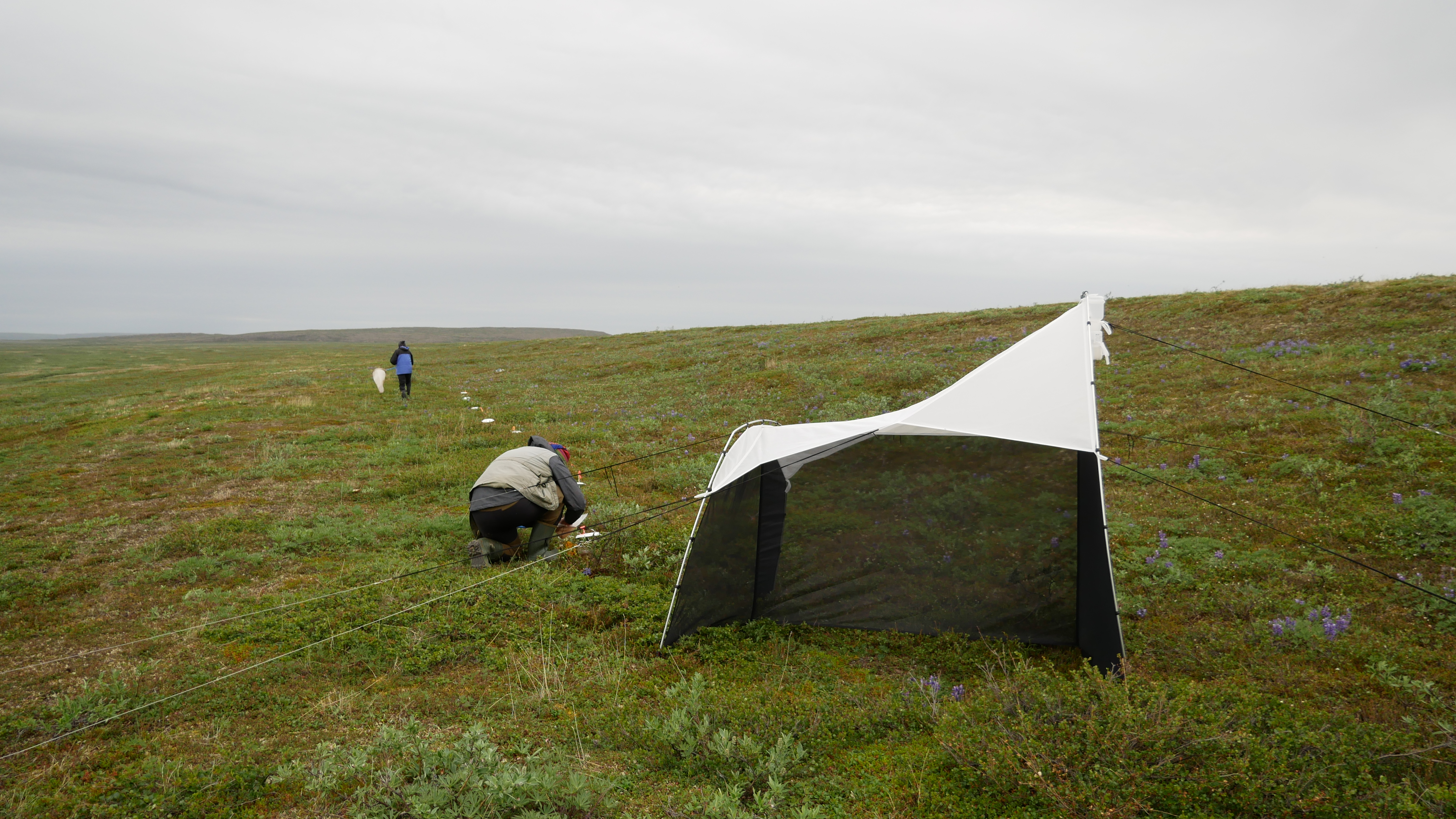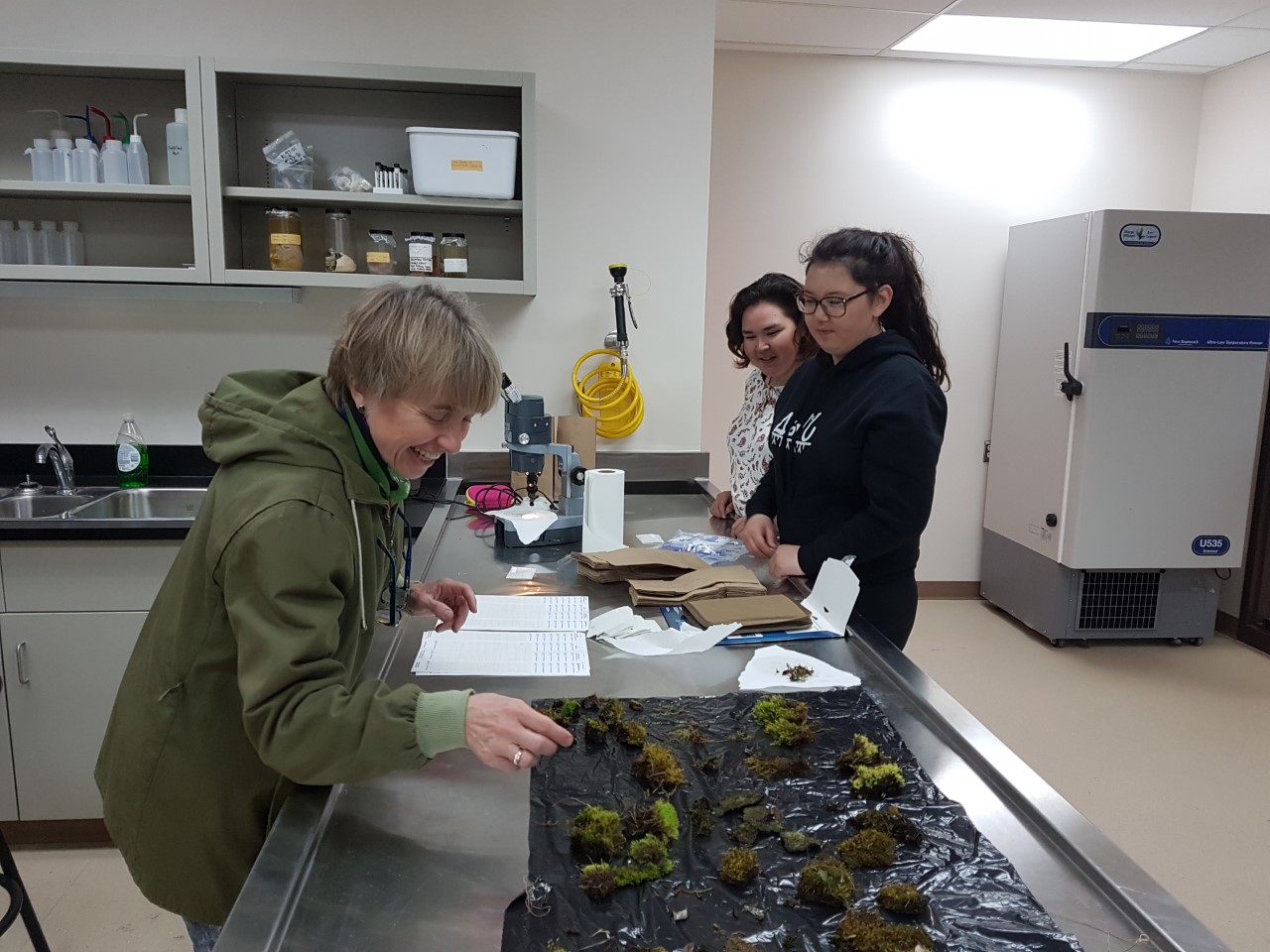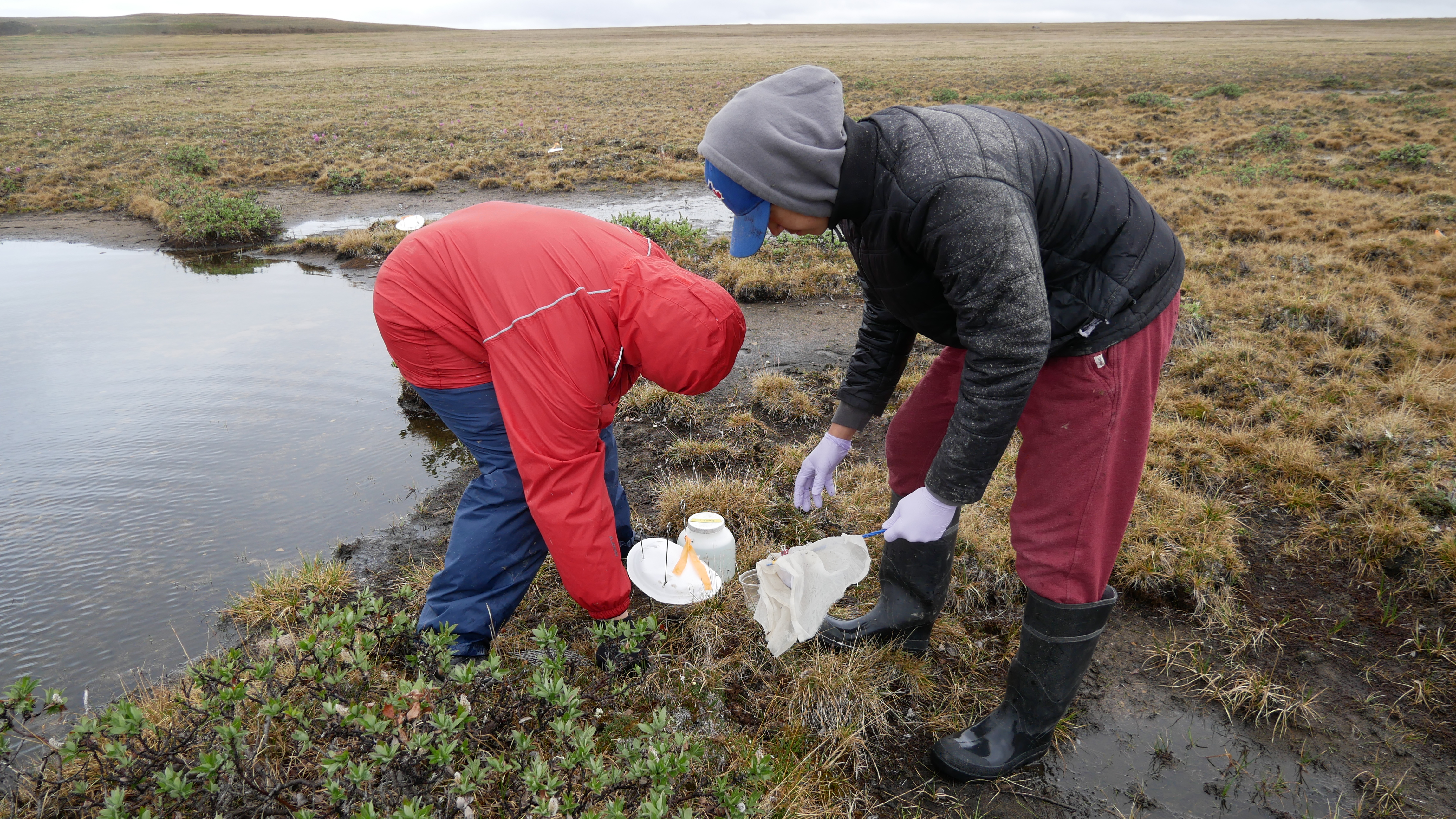Arctic BIOSCAN: Mapping living organisms using DNA barcoding in Nunavut's Kitikmeot Region and developing a platform for community-based biodiversity monitoring
Authors
- H. James, Centre for Biodiversity Genomics, University of Guelph, Ontario, Canada, hjames@uoguelph.ca
- A. Borisenko, Centre for Biodiversity Genomics, University of Guelph, Ontario, Canada
- B. Vandenbrink, ARCBIO Science Ranger, Kiilinik High School, Cambridge Bay, Nunavut, Canada
- J. Maksagak, ARCBIO Science Ranger, Kiilinik High School, Cambridge Bay, Nunavut, Canada
- C. Lear, ARCBIO Science Ranger, Kiilinik High School, Cambridge Bay, Nunavut, Canada
- M. Kuzmina, Centre for Biodiversity Genomics, University of Guelph, Ontario, Canada
- K. Perez, Centre for Biodiversity Genomics, University of Guelph, Ontario, Canada
- C. Sobel, Centre for Biodiversity Genomics, University of Guelph, Ontario, Canada
- T. McIlwraith, Department of Sociology and Anthropology, University of Guelph, Ontario, Canada
- I.D. Hogg, Polar Knowledge Canada, Canadian High Arctic Research Station, Cambridge Bay, Nunavut, Canada
- J. deWaard, Centre for Biodiversity Genomics, University of Guelph, Ontario, Canada
- P. Hebert, Centre for Biodiversity Genomics, University of Guelph, Ontario, Canada
Citation information
James, H., Borisenko, A., Vandenbrink, B., Maksagak, J., Lear, C., Kuzmina, M., Perez, K., Sobel, C., McIlwraith, T., I. Hogg, I.D, deWaard, J., and P. Hebert, P. 2020. Arctic BIOSCAN: Mapping living organisms using DNA barcoding in Nunavut's Kitikmeot Region and developing a platform for community-based biodiversity monitoring. Polar Knowledge: Aqhaliat Report, volume 3, Polar Knowledge Canada, p. 34–38. DOI: 10.35298/pkc.2020.09.eng
Article
Understanding the impacts of global change on Canada's Arctic will be incomplete without comprehensive information on biodiversity. Past surveys have largely focused on the most conspicuous and easily identified species; however, identifying most of the Arctic biodiversity requires specialized taxonomic expertise. A new project led by the Centre for Biodiversity Genomics (CBG) at the University of Guelph aims to change this situation. Arctic BIOSCAN (ARCBIO) is setting the foundation for inclusive biodiversity monitoring through an approach that identifies species by sequencing DNA barcodes – tiny segments of an organism's genome. Enabled by Polar Knowledge Canada's (POLAR) Northern Science and Technology Program, ARCBIO involves partnerships with the Canadian High Arctic Research Station (CHARS) and community organizations, including the Ekaluktutiak and Kugluktuk Hunters and Trappers Organizations (HTOs) as well as regional wildlife and Territorial Parks offices.
ARCBIO has grand plans – it aims to provide POLAR with the capacity to survey biotic change across the Arctic. Its pilot phase is focused on demonstrating the effectiveness of this approach in one region – the Environmental Research Area (ERA) established by CHARS in the Kitikmeot Region of Nunavut (Figure 1). Work is focused on assembling a DNA barcode reference library for the fauna and flora of this area. Over the first half of the five-year pilot phase, ARCBIO researchers have collected over 2,000 bulk samples of animals, plants, fungi, and lichens from terrestrial, freshwater, and marine environments near Cambridge Bay and Kugluktuk (Figure 2). These collections have been processed and DNA barcoded at CBG (deWaard et al., 2019), and the results are publicly available on the Barcode of Life Data System (Ratnasingham and Hebert, 2007). Aside from analyzing new collections (e.g., Pentinsaari et al., 2020), ARCBIO staff are working with major natural history collections, such as the Canadian Museum of Nature, to source species for analysis that would otherwise be difficult to recollect. Broader geographic context is also being added by analyzing specimens collected by other recent expeditions to the Arctic (e.g., McMullin, 2019). Overall, ARCBIO has now documented over 110,000 occurrence records for nearly 14,000 species in Canada's northern territories.
ARCBIO's progress is heavily reliant on advice and support from organizations in the Kitikmeot region (Figure 3). For example, the 2019 field team was reinforced by three Science Rangers (Figure 4), recruited by the HTOs, who gained training in protocols for biodiversity assessment. A streamlined framework is being developed to ensure prompt reporting of biodiversity shifts that may affect community livelihoods or ecosystem health. These partnerships will be vital to the success of ongoing monitoring efforts and will lay the foundation for future community-based biodiversity monitoring in the ERA and the Arctic, at large. Information is also being disseminated through the project's website and through other media.
ARCBIO is also an important component of BIOSCAN, a global effort to deploy real-time DNA-based biodiversity monitoring platforms for all multi-cellular organisms (Hobern, 2020).

Figure 1: Locations of ARCBIO's current monitoring sites and proposed new survey sites in the Kitikmeot region, relative to the CHARS ERA (coloured areas depict different ecoregions).

Figure 2: CBG researchers, Mikko Pentinsaari and Gergin Blagoev, performing standardized sampling of arthropod communities near Kugluktuk.

Figure 3: CBG researcher, Maria Kuzmina, sorts brophytes with Kugluktuk students, Amber Adjun and Breale Hokanak at the new wildlife laboratory, Kugluktuk KWRB.

Figure 4: ARCBIO science ranger, Jaiden Maksagak, and CBG technician, Andrea Dobrescu, checking pitfall samples at a site near Long Point, Cambridge Bay.
Acknowledgements
The project was made possible, thanks to a contribution agreement under the POLAR Science and Technology Program. The ARCBIO team is also grateful to colleagues at the CBG for their hard work in the field in collections and in the lab. We are also grateful to our project community partners in Cambridge Bay and Kugluktuk and to CHARS staff and researchers for their guidance and support at various stages of project development and during field work activities.
In particular, we would like to acknowledge the following individuals from Cambridge Bay and Kugluktuk:
- Beverly Maksagak (Manager, Ekaluktutiak HTO),
- Amanda Dumond (Manager, Kugluktuk HTO),
- Carter Lear (ARCBIO Science Ranger, Cambridge Bay),
- Thomas Bolt (Science Ranger, Kugluktuk),
- Dettrick Hokanak (Wildlife Monitor, Kugluktuk),
- Bobby Greenley (Chair, Ekaluktutiak HTO),
- Larry Adjun (Chair, Kugluktuk HTO),
- Gerry Atatahak (Kitikmeot Regional Coordinator, Parks Planning and Operations, Kugluktuk),
- Allen Niptanatiak and Russell Akeeagok (Conservation Officers II, Nunavut Department of Environment, Kugluktuk),
- Ipeelie Ootoova (Ekaluktutiak HTO),
- Bob and Brenda Jencke (Cambridge Bay),
- Baba Pederson (Kugluktuk),
- Kerry and Irene Horn (Coppermine Inn, Kugluktuk),
- Terence Milton (Wildlife Technician, Kugluktuk),
- Kevin Methuen (Regional Wildlife Manager, KRWB, Kugluktuk),
- Lisa-Marie Leclerc (Regional Wildlife Biologist, KRWB, Kugluktuk),
- Lashawna Taipana (KIA, Kugluktuk).
References
- deWaard, J. R., Ratnasingham, S., Zakharov, E. V., Borisenko, A. V., Steinke, D., et al. 2019. A reference library for the identification of Canadian invertebrates: 1.5 million DNA barcodes, voucher specimens, and genomic samples. Scientific Data 6:308. doi:10.1038/s41597-019-0320-2
- Hobern, D. 2020. BIOSCAN: DNA barcoding to accelerate taxonomy and biogeography for conservation and sustainability. Genome 8:1–4. doi:10.1139/gen-2020-0009
- Pentinsaari, M., Blagoev, G. A., Hogg, I. D., Levesque-Beaudin, V., Perez, K., Sobel, C. N., Vandenbrink, B., and Borisenko, A. 2020. A DNA barcoding survey of an Arctic arthropod community: Implications for future monitoring. Insects 11:46. doi:10.3390/insects11010046
- McMullin, R. 2019. New and interesting Canadian lichens and allied fungi II: Reports from British Columbia, New Brunswick, Nova Scotia, Nunavut, Prince Edward Island, Ontario, and Quebec. Opuscula Philolichenum 18:396–419
- Ratnasingham, S and Hebert, P. D. N. 2007. BOLD: The Barcode of Life Data System (www.barcodinglife.org). Molecular Ecology Notes 7:355–364. doi:10.1111/j.1471-8286.2007.01678.x
Polar Knowledge Canada
For media inquiries, contact:
communications@polar-polaire.gc.ca